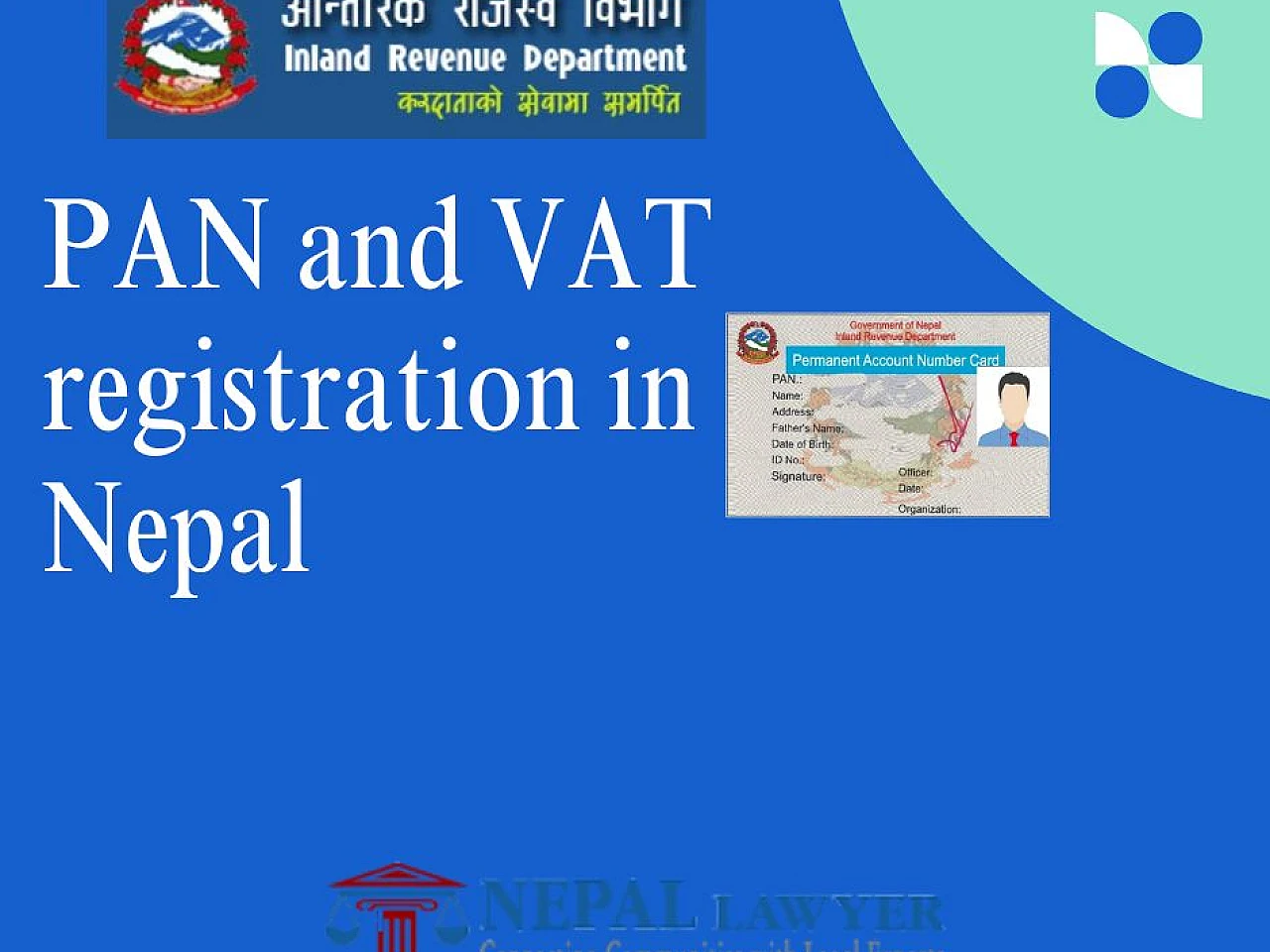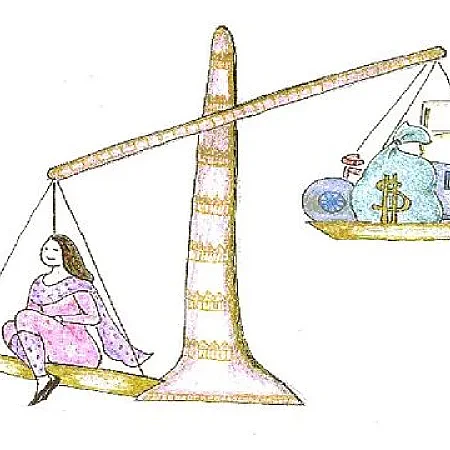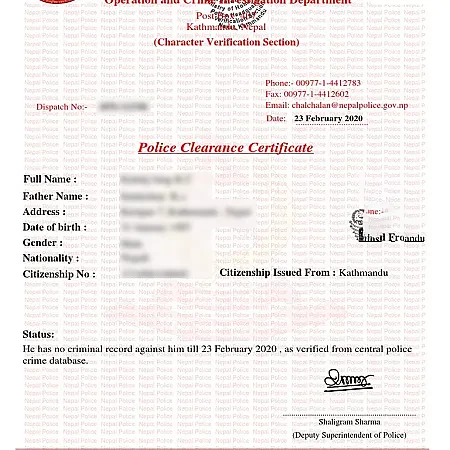What is a PAN?
PAN (Permanent Account Number) is the unique 9-digit number given to individuals and businesses by the (IRD) Inland Revenue Department in Nepal. The IRD handles the distribution and administration of PAN in Nepal. PAN registration in the tax regulation of Nepal. PAN is especially used in Nepal for Tax regulation and income flow regulation and its taxation in Nepal. PAN is a mandatory tax registration for individuals residing in Nepal who carry out any sort of business. Income tracking is the main goal of PAN in Nepal.
Basic needs to register for a PAN?
- Anyone earning taxable income may be businesses or individuals.
- All kinds of businesses, small and larger corporations both.
- Professionals such as doctors, lawyers, teachers, engineers, consultants etc.
Some of the uses of PAN are:
- Filing income tax returns.
- Used for business licensing purposes.
- Necessary for invoicing, employee salary payments, and official transactions.
Minimum threshold for PAN registration in Nepal:
- There is no minimum threshold or income category for the registration of PAN. All citizens can now register PAN through the use of Nagarik App within a minute.
What is VAT?
VAT (Value Added Tax) registration is the registration that must be done by businesses that sell goods or services subject to Value Added Tax. It allows them to collect VAT from customers and claim input VAT credits. VAT is an added end of tax, it is not a tariff. It is a consumption tax assessed on the value added in each production stage of a goods or services. In general VAT is the process by which businesses in Nepal register with the IRD to collect remit VAT on their goods and services sold. VAT registration provides different tax leverages to the business entities.
VAT registration is essential for major businesses running high capital flow and high daily sales and monthly sales. Tax is one of the most important sources of revenue for the government for its administrative operation.
Who must register for VAT in Nepal?
- Business entities with annual turnover exceeding NPR 5 million.
- Businesses dealing in specific goods (alcohol, cigarettes, etc.) regardless of turnover
- Businesses voluntarily opting for VAT registration.
Uses and Purpose of VAT
- Source of revenue for the government.
- Helps fund public services, infrastructure, and social development.
- Provides valuable data on consumption patterns and economic activity
- Helps government monitor economic trends and make policy decisions
- Useful for economic analysis and forecasting
Minimum Threshold for VAT registration in Nepal
Mandatory Registration Thresholds
- Standard Threshold: Annual turnover exceeding NPR 5 million (approximately USD 37,500)
- Service Providers: Annual turnover exceeding NPR 2 million (approximately USD 15,000) for specific service sectors
- Metropolitan/Sub-metropolitan Areas: Lower thresholds may apply for certain businesses in urban areas
Zero Threshold (mandatory regardless of turnover)
Businesses dealing in the following must register for VAT regardless of turnover:
- Alcoholic beverages
- Cigarettes and tobacco products
- Bricks, marble, slate, and similar construction materials
- Electronic goods (televisions, refrigerators, etc.)
- Motor parts and vehicles
- Professional services (legal, accounting, consulting, etc.)
- Import/Export businesses
- Entertainment services (hotels, restaurants graded 3-star and above)
Voluntary registration
- Businesses below the threshold can voluntarily register for VAT
Beneficial for businesses that:
- Supply to VAT-registered businesses
- Expect growth to exceed thresholds soon
- Want to appear more established/formal
Difference between VAT and PAN
1. Definition & Purpose
|
Criteria |
PAN (Permanent Account Number) |
VAT (Value Added Tax) |
|
Definition |
A unique 9-digit identification number for taxpayers issued by the Inland Revenue Office (IRO). |
An indirect tax levied on the value added to goods and services at each stage of production and distribution. |
|
Purpose |
To track and manage Income Tax obligations. |
To facilitate the collection of Value Added Tax on taxable goods and services. |
2. Legal Basis
|
Criteria |
PAN |
VAT |
|
Legal Provision |
Income Tax Act, 2058 |
Value Added Tax Act, 2052 |
|
Regulator |
Inland Revenue Department (IRD), Nepal |
Inland Revenue Department (IRD), Nepal |
3. Applicability & Mandatory Criteria
|
Criteria |
PAN |
VAT |
|
Who Must Register |
Any individual, firm, or company conducting business or earning taxable income. |
Businesses with annual turnover: |
|
Voluntary Registration |
Not applicable – PAN is mandatory for all businesses. |
Allowed for businesses below the threshold. |
4. Tax Type
|
Criteria |
PAN |
VAT |
|
Tax Type |
Direct tax – applies to income earned. |
Indirect tax – applies to sales of goods and services. |
|
Tax Rate |
Based on income slabs (ranging from 1% to 30%) |
Standard VAT rate is 13% on taxable goods/services. |
5. Registration Process
|
Criteria |
PAN |
VAT |
|
Where to Apply |
Inland Revenue Office (physically or online via IRD Portal) |
Inland Revenue Office (physically or online via IRD Portal) |
|
Documents Required |
- Citizenship/Passport |
- PAN certificate |
6. Compliance Requirements
|
Criteria |
PAN |
VAT |
|
Invoice Type |
PAN Invoice |
VAT Invoice (with 13% VAT charged) |
|
Return Filing |
Annually or quarterly/monthly (depends on taxpayer type) |
Monthly VAT returns are mandatory. |
|
Record Keeping |
Maintain income records, expenditures, salary, TDS, etc. |
Maintain purchase/sales book, tax invoices, input/output VAT accounts. |
. Penalties for Non-Compliance
|
Criteria |
PAN |
VAT |
|
Non-Registration |
Penalty under Income Tax Act. |
Fines and possible business suspension under VAT Act. |
|
Late Filing |
Monetary fines plus interest. |
Monthly penalty of NPR 1,000 for late filing + interest on unpaid VAT. |
8. Practical Differences
|
Feature |
PAN |
VAT |
|
Nature of Tax |
Tracks income and TDS |
Adds 13% tax on sales |
|
Suitable for |
All income-generating individuals and businesses |
Medium to large businesses or service providers exceeding threshold |
|
Benefits |
Needed for licenses, bank accounts, and legal operations |
Enables VAT credit claims and builds business credibility |
|
Compliance Burden |
Lower |
Higher (monthly filings, strict invoicing rules) |
FAQs on VAT and Tax Registration in Nepal
Registration Requirements
Q: What is the general VAT registration threshold?
A: NPR 5 million annual turnover for most businesses.
Q: Do all businesses need to register for taxes?
A: All businesses must register for PAN, but VAT is required only above thresholds or for specific industries.
Q: Can I register voluntarily below the threshold?
A: Yes, voluntary VAT registration is possible even below turnover thresholds.
Process and Documentation
Q: How long does VAT registration take?
A: Typically 3-7 working days after document verification.
Q: What documents are needed for registration?
A: Business registration, PAN certificate, citizenship, photos, premises documents, and bank details.
Q: Where do I register for VAT?
A: At the Inland Revenue Department (IRD) or through their online portal.
Compliance and Operations
Q: How often must VAT returns be filed?
A: Monthly, by the 25th of the following month.
Q: What is the standard VAT rate in Nepal?
A: 13% for most goods and services.
Q: Are there penalties for late registration?
A: Yes, penalties include fines and possible retroactive tax liability.
Q: Can I claim input tax credits?
A: Yes, VAT-registered businesses can claim credit for VAT paid on purchases.
Q: What records must be maintained?
A: Tax invoices, purchase books, sales books, and VAT accounts.




